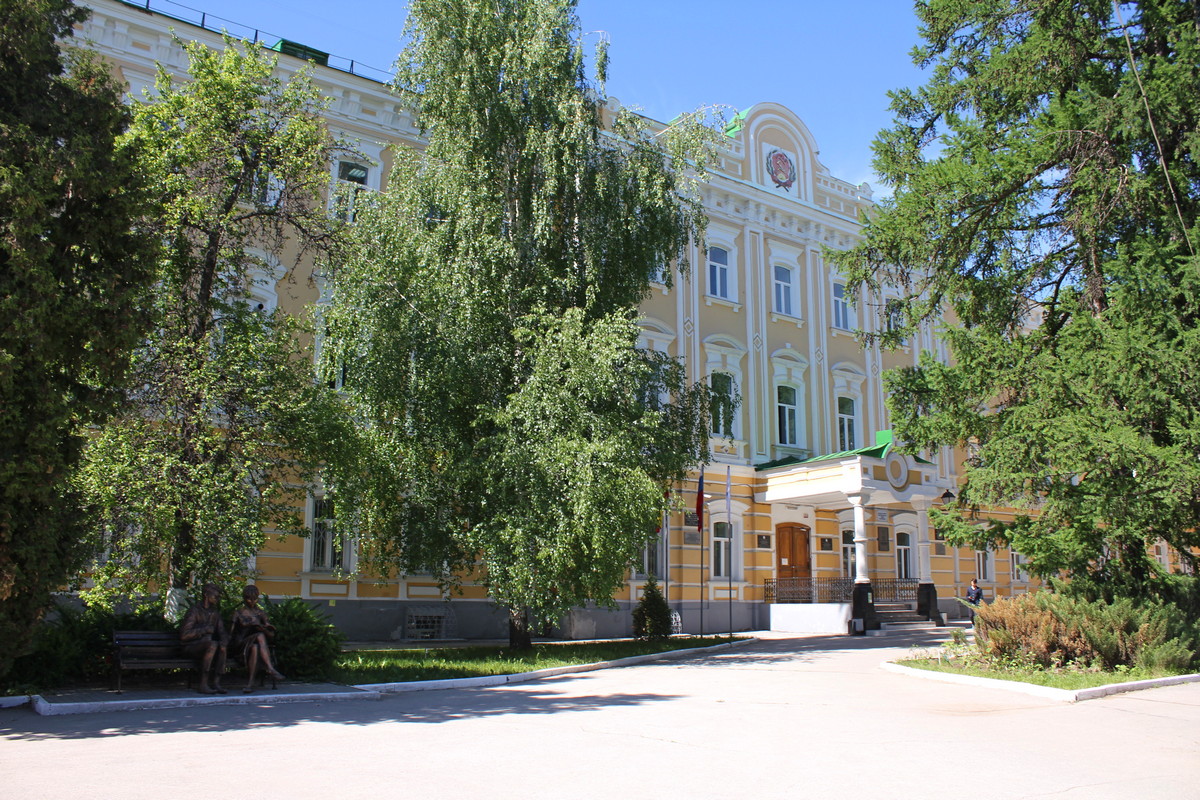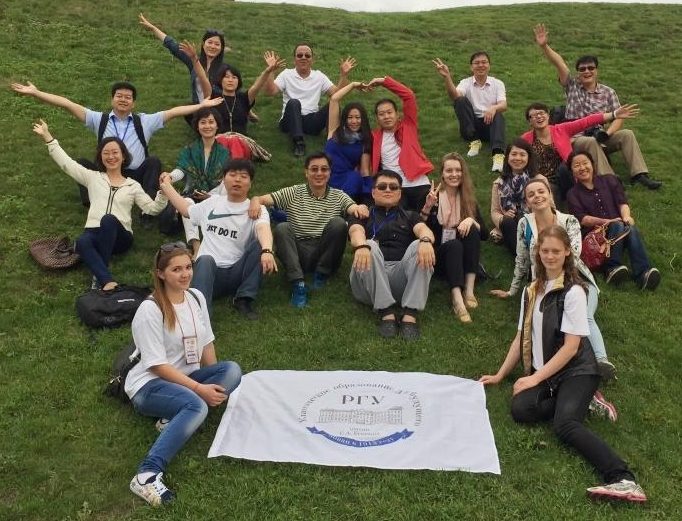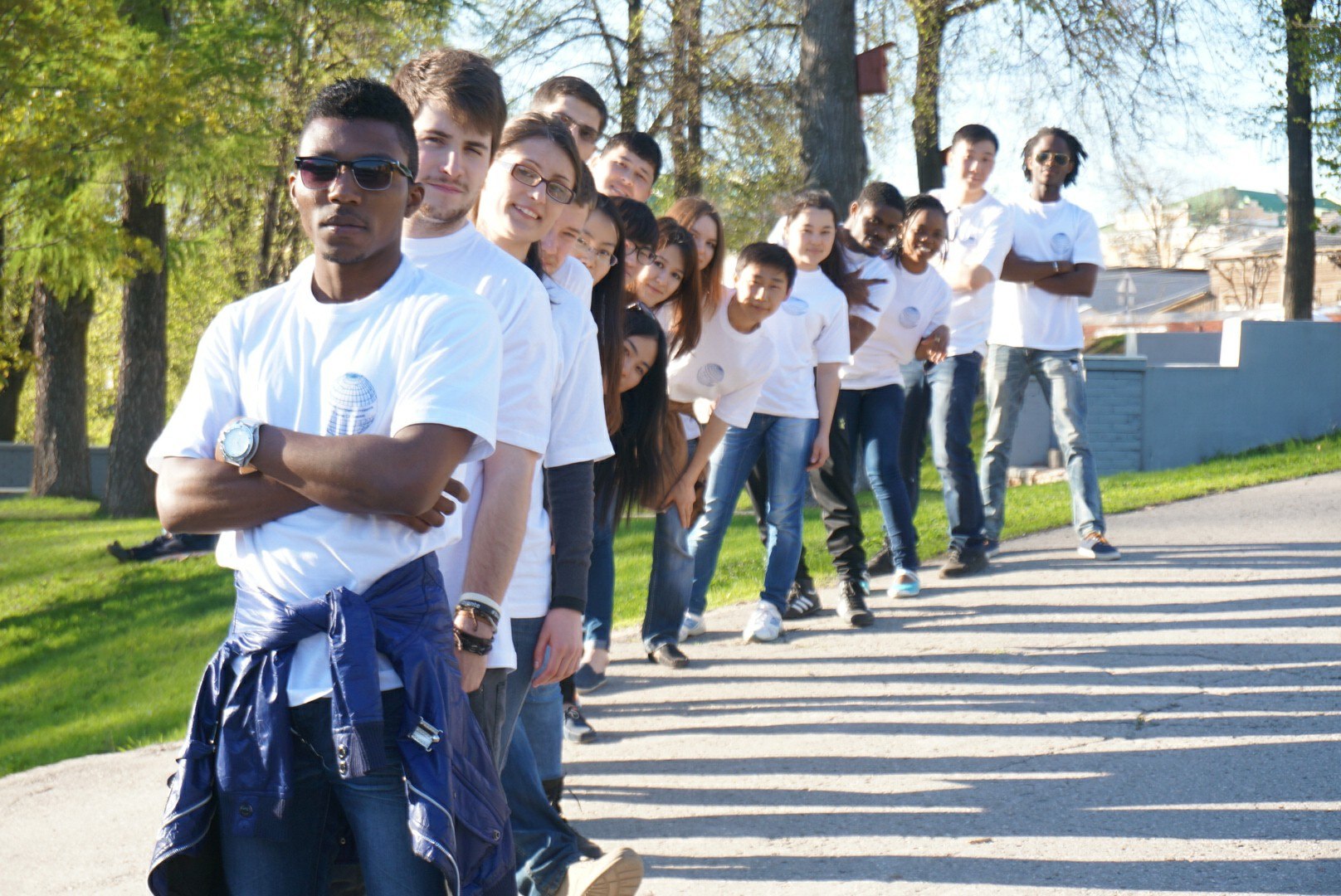Ryazan State University named for S. Yesenin
Throughout its existence, the structure of the university has been constantly evolving. In 1918, the Pedagogical Institute trained students in 4 areas only: physics and mathematics, natural sciences, geographical and historical, and philological. In 1930, about 100 students studied at the agronomic, physical-technical, chemical-biological and social-literary departments. By 1934, there appeared a workers’ faculty and an extramural department. By the beginning of the 40s, the institute had the following departments: physics and mathematics, natural sciences, history, the Russian language and literature. At that time, more than 1000 students studied and 88 professors worked at the Pedagogical Institute.
Nowadays, the university houses:
Structure of the University
- Institute of Natural Sciences
- Institute of the Foreign languages
- Institute of Psychology, Pedagogics and Social Work
- Institute of History, Philosophy and Political Science
- Faculty of Russian Philology and National Culture
- Faculty of Sociology and Management
- Faculty of Physical Training and Sports
- Faculty of Physics and Mathematics
- Faculty of Economics
- Law Institute
As well as university-wide departments:
- Center for Life-Long Learning
- Department of Foreign Languages
7 research centres, scientific and methodological centres and scientific and educational centres,
11 research and academic research laboratories,
7 scientific and educational centres.
Staff
400+ research staff members and lecturers
280+ Candidates of Science
80+ Doctors of Science
200+ Associate Professors
50+ Full Professors
10 foreign lecturers
Students
10,000+ bachelor and master degree students
120+ postgraduate students
300+ foreign students
150+ students go on internship abroad
Issuing European Commission standard Diploma Supplement in English to Russian Degrees
Research fields
The University is among the initiators and active participants of the regional Equipment Building cluster, involving the leading businesses of the scientific and industrial complex.
The 28 leading research directions in the RSU include the following directions as priority ones: kinetic effects and mechanisms of electron relaxation in nanostructures; electron physics; co-ordination of chiral amino-phosphites; modelling, analysis and optimization of computing systems based on neural processors, and others:
Development of a multifunctional programming platform for neural processor and systems, “NP Studio”
 Study of construction and technological principles in design of complicated component shapes via 3-dimensional modeling in additive manufacturing
Study of construction and technological principles in design of complicated component shapes via 3-dimensional modeling in additive manufacturing
Design and academic implementation of the model and technology of life-long education in professional training systems (including secondary school, higher school and postgraduate education) in engineering and technical training (educational direction of “New industrial technologies”)
Resource-saving and solar-powered technologies and equipment, pure materials for nano-electronics. Physical processes in heterogeneous structures
Analytical equipment design and diagnostics of nanostructures and substance tracing
Quadruple mass-analyzed spectrometry
Study of optical characteristics of heterogeneous structures: porous silicon and single-crystalline silicon
Design and synthesis of completely novel phosphite ligands
Development of meteoroid risk models in near-earth space
Research of fauna
Environmental ecology
Monitoring of biological diversity in areas subjected to emissions from industrial enterprises
Regeneration patterns for soil-inhabiting invertebrate animals in post-fire areas
Floristic and geo-botanical research
Study of micro-biocenoses of aquatic biological systems
Ecological, geo-chemical and environmental capacitates of terrains: estimation, improvement, and management
Study of precariatization processes in youth employment
Applied linguistics
Implementation of innovative educational media technologies in correction and rehabilitation technologies
International communication
55+ effective international agreements
50+ visiting foreign teams every year
15+ international youth conventions:
Russia–Armenia Youth Forum
Russia–China Forum of Youth Leaders
Summit of CIS Student Leaders
“Multinational Russia” Forum
“Eurasia Is Us” Forum
“Smart-Up” International Young Scientists’ Forum and other
General facts about the University
- Participation in “Photonics” technology platform – association aimed at economic modernization and innovative development of Russia
- Membership in the European Consortium of universities TEMPUS IV aimed at training of educators for work with heterogeneous groups
- Participation in the EC “Erasmus+” mobility programme
- Convention of over 40 conferences per year (regional, national and international) levels)
- Organization of the “RGU.Science” Festival (over 4,000 visitors annually)
- Intel “STEM Centre” as an event of the “RGU.Science” Festival, to promote scientific research among university and school students
- Foundation of 6 scientific journals (4 of them are certified by the Higher Attestation Commission of Russia)
- In year 2014, the RSU Confucius Institute was the only such institution in Russia to enter the 25 Top Confucius Institutes worldwide




